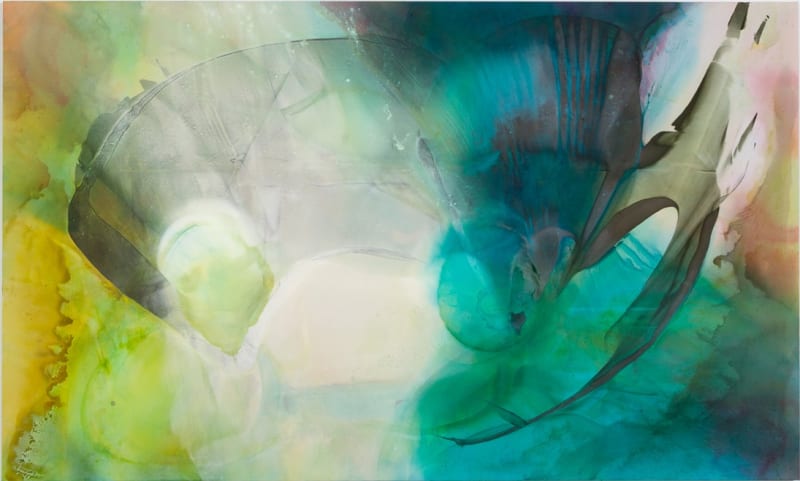While informed by varied traditions including ancient Eastern calligraphic and ink wash practices, 19th century Romanticism, and early Modernism, Baker is truly a landscape painter. Although her most recent works are abstractions, she derives inspiration from forces of nature, the shifting of light, and the horizon.
Moskowitz Bayse is pleased to announce Transitive Horizon, an upcoming exhibition of new paintings by Los Angeles-based artist Claire Anna Baker. The exhibition will be her first with the gallery, and her second solo presentation in Los Angeles.
Claire Anna Baker’s practice explores density, vastness, expansion, and transformation through different exchanges of energy. Her works translate internal spaces into external ones and vice versa, each creating a void-like reality into which viewers may enter and immerse.
While informed by varied traditions including ancient Eastern calligraphic and ink wash practices, 19th century Romanticism, and early Modernism, Baker is truly a landscape painter. Although her most recent works are abstractions, she derives inspiration from forces of nature, the shifting of light, and the horizon. Like metaphors, her compositions serve as both statements and questions that symbiotically examine the relationships between elements in flux.
The quiet, receptive, and meditative qualities in the artist’s compositions are mirrored in her process. For each body of work, Baker collects both organic and inorganic materials and with them builds an environment in her studio that she refers to as a “source installation”. She then draws this environment daily; over many months she observes the environment from which she derives the gestures that become the foundation of her large-scale paintings.
Once ready, Baker transforms, translates and transfers each choreographed gesture or calligraphic “dark mark” onto the surface in a powerful, momentary burst of expression. She then turns her attention to the transparent washes of color, which she adds gradually to the gesture over time. The transparency of the ink holds light and mixes into iridescent color, cultivating fluid expansion into the picture plane. In doing so, Baker examines an intimacy with the vastness of the horizon, and the paradox of its infinite nature. Each work draws the viewer’s attention to the idea of what is very far becoming close and vice versa.
The unique materiality of Baker’s work has developed alongside her process. While she learned an extensive amount about touch and surface from her many years of experimen-tation with oil painting, it was not until she committed to ink that she was able to achieve her desired aesthetic. After years of investigation, she has delicately honed the marriage of a particular synthetic ink to a high-grade polyester surface. Both materials are inextrica-bly linked to the success of the vastness she creates in her compositions. The machined grain pattern of the polyster surface interacts with each indefatigable gesture, while the insolubility of the material allows for the layering of ink washes around the gesture. The confluence of the two creates an organic pixel-like effect that produces the unique texture of each painting.
